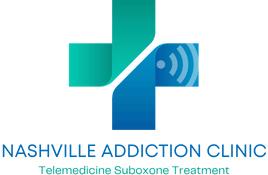What is Precipitated Withdrawal?
In layman’s terms, precipitated withdrawal occurs when someone takes Suboxone too soon after taking another opioid. Suboxone’s buprenorphine can’t do its job because there’s another opioid in its way.
Transitioning to Suboxone requires the assistance of a trained prescriber with addiction experience. Nashville Addiction Clinic’s prescribers use the COWS Scale to determine the soonest time a transition to Suboxone can occur without triggering precipitated withdrawal.
Full Agonist Opioids vs. Partial Agonist Opioids
Opioids like hydrocodone, oxycodone, OxyContin, Percocet, heroin, morphine and fentanyl are known as “full agonist” opioids. They “fully bind” to the millions of receptors in your brain.
Suboxone’s buprenorphine is known as a “partial agonist”. Buprenorphine only “partially binds” to the millions of opioid receptors in your brain.
How to Avoid Precipitated Withdrawal
The key to avoiding precipitated withdrawal is by following the advice of a trained prescriber who uses the COWS Scale. The COWS Scale helps determine the earliest possible time that someone can begin taking Suboxone. Usually, this is only a matter of hours after someone takes their last opioid.
Always follow the advice of a trained prescriber with a DEA X-waiver before taking Suboxone.
Start Virtual Suboxone Treatment Today
Nashville Addiction Clinic accepts all TennCare Medicaid insurance, commercial insurance plans from Anthem, BCBS, Cigna, Humana and United Healthcare. If you don’t see your insurance plan, please contact us.
I Have TennCare Medicaid I Have Commercial Insurance Self-Pay (no insurance)


